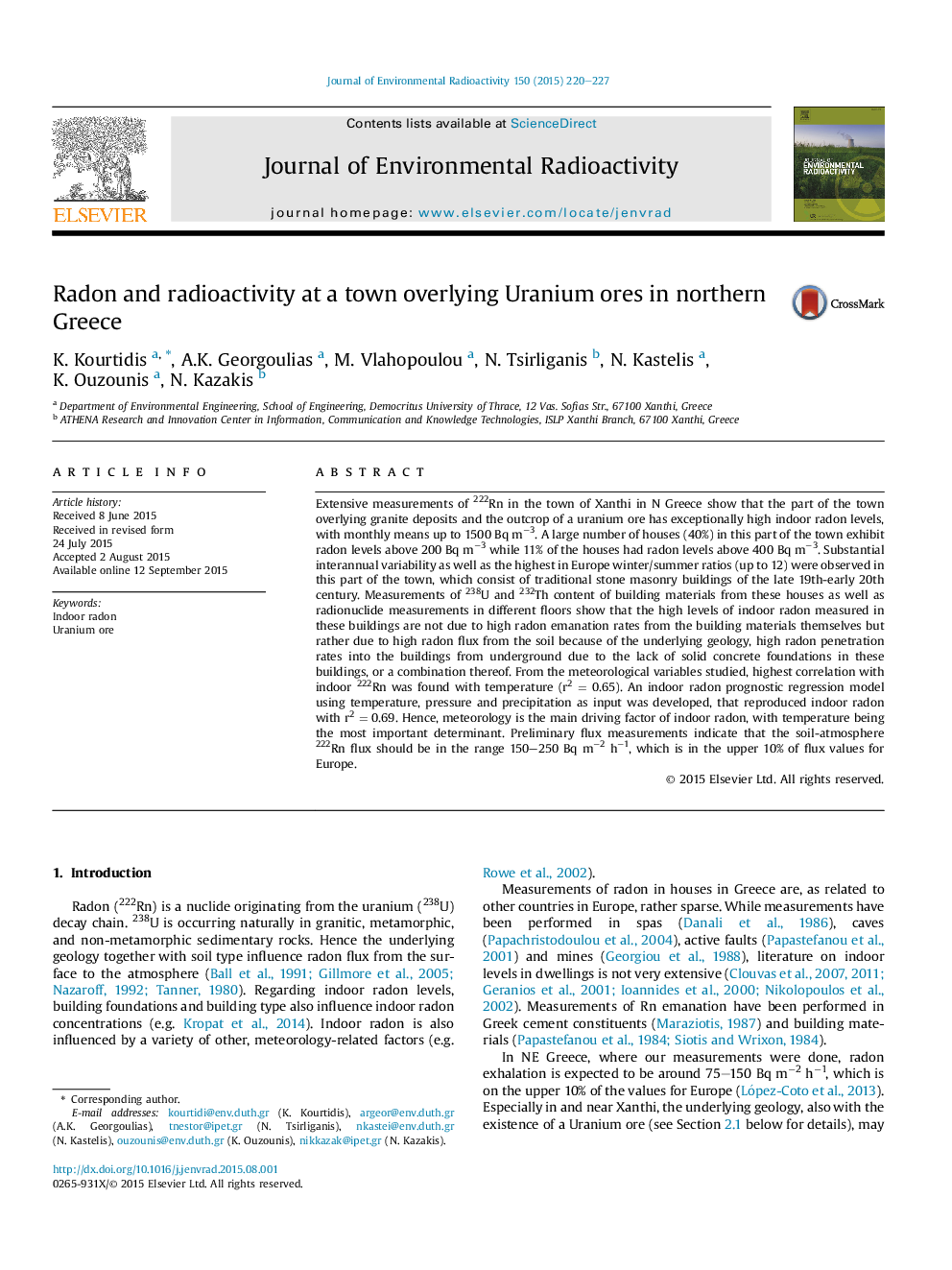| کد مقاله | کد نشریه | سال انتشار | مقاله انگلیسی | نسخه تمام متن |
|---|---|---|---|---|
| 1737806 | 1521583 | 2015 | 8 صفحه PDF | دانلود رایگان |
• Very high levels of indoor Rn were found in Xanthi, Greece, overlying granites with Uranium ore.
• Monthly means were up to 1500 Bq m−3 in some houses.
• Observed indoor Rn winter/summer ratios (up to 12) are the highest in Europe.
• The high indoor Rn levels are attributed to high Rn soil-air flux because of the underlying geology.
• A regression model between T, P, Precipitation and indoor Rn was constructed that reproduced very well indoor Rn.
Extensive measurements of 222Rn in the town of Xanthi in N Greece show that the part of the town overlying granite deposits and the outcrop of a uranium ore has exceptionally high indoor radon levels, with monthly means up to 1500 Bq m−3. A large number of houses (40%) in this part of the town exhibit radon levels above 200 Bq m−3 while 11% of the houses had radon levels above 400 Bq m−3. Substantial interannual variability as well as the highest in Europe winter/summer ratios (up to 12) were observed in this part of the town, which consist of traditional stone masonry buildings of the late 19th-early 20th century. Measurements of 238U and 232Th content of building materials from these houses as well as radionuclide measurements in different floors show that the high levels of indoor radon measured in these buildings are not due to high radon emanation rates from the building materials themselves but rather due to high radon flux from the soil because of the underlying geology, high radon penetration rates into the buildings from underground due to the lack of solid concrete foundations in these buildings, or a combination thereof. From the meteorological variables studied, highest correlation with indoor 222Rn was found with temperature (r2 = 0.65). An indoor radon prognostic regression model using temperature, pressure and precipitation as input was developed, that reproduced indoor radon with r2 = 0.69. Hence, meteorology is the main driving factor of indoor radon, with temperature being the most important determinant. Preliminary flux measurements indicate that the soil-atmosphere 222Rn flux should be in the range 150–250 Bq m−2 h−1, which is in the upper 10% of flux values for Europe.
Journal: Journal of Environmental Radioactivity - Volume 150, December 2015, Pages 220–227
